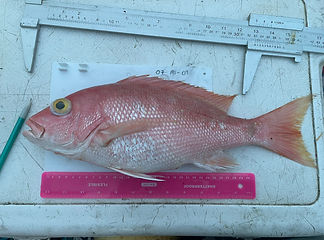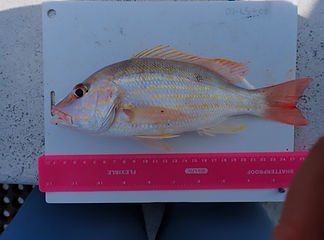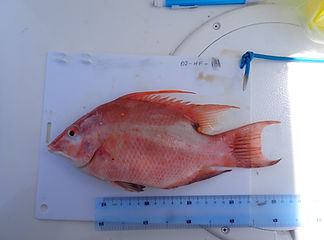
Fish Population Structure within Belize
Understanding Fish Populations to Strengthen Belize’s Fisheries Future
Project Summary
This project builds scientific capacity in Belize by investigating the population structure and connectivity of key marine species through a combined approach of genetic analysis and fishers’ ecological knowledge. Its central aim is to strengthen national fisheries science by generating data that supports more informed, inclusive, and sustainable fisheries management.
The research focuses on ecologically and commercially important species, silk red snapper (Lutjanus purpureus), lane snapper (Lutjanus synagris), and hogfish (Lachnolaimus maximus). In response to a request from the Belize Fisheries Department (BFiD), the project also includes an assessment of Queen Conch (Aliger gigas), comparing populations across shallow fishing grounds and deeper, replenishment zones. By integrating genetic findings with the lived experience of fishers, this project provides a richer understanding of marine population dynamics while offering practical insights for national management strategies and policy planning.
Project Objectives
-
Examine the genetic diversity and connectivity of silk red snapper, lane snapper, and hogfish populations across Belize marine space.
-
Assess Queen Conch population structure across shallow (<60 ft) and deep-water (>60 ft) habitats at Turneffe Atoll.
-
Document and integrate fishers’ knowledge on species population structure.
-
Provide robust scientific evidence to support national fisheries management plans and long-term sustainability efforts.
-
Contribute to key national strategies including the National Environmental Action Plan (2022–2026), Blue Economy Development Policy, and the Multispecies Finfish Management Plan (2022).
Methodological Approach
The project uses an approach that integrates molecular genetics with participatory research. Tissue samples from the target fish species are collected across Belizean waters and analyzed to assess genetic diversity and population connectivity. At the same time, local fishers are actively engaged through interviews and focus groups to document their ecological knowledge, insights on species distribution, and movement patterns.
By combining these two data streams, genetic data and fishers’ observations, the project generates a more comprehensive and grounded understanding of population structure for the fishery perspective. This interdisciplinary approach supports fisheries management strategies that are not only scientifically robust but also informed by the people who depend on and steward these resources.

Silk red snapper (Lutjanus purpureus)

Lane snapper (Lutjanus synagris)

Hogfish (Lachnolaimus maximus)
Project Impact
This project will generate valuable insights into the population dynamics of commercially important marine species in Belize, with the following anticipated outcomes:
-
Enhanced understanding of genetic connectivity among populations of snapper, hogfish, and Queen Conch.
-
Integration of local ecological knowledge into scientific analysis and policy development.
-
Evidence-based recommendations for sustainable harvest levels and replenishment zone design.
-
Direct contributions to national fisheries management plans and Belize’s Blue Economy objectives.
-
A replicable model for integrated socio-ecological research in marine resource governance.









